Flower Pot Drawing Design With Colour
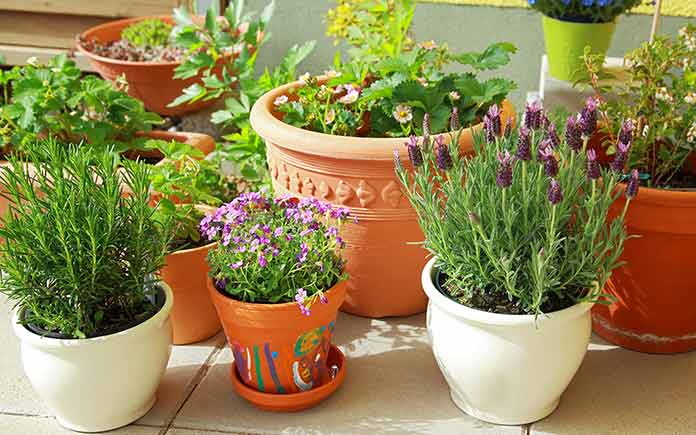
Do you lack a green thumb but desire a beautiful backyard with plants? Growing flowers in pots is a satisfying way to brighten up your porch or yard, and it's a great way to get started with gardening.
Here's everything you need to know to get going.
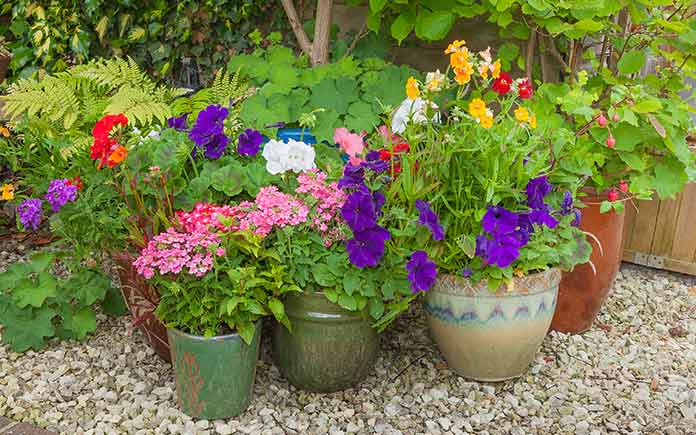
Shopping List
Here's what you'll need to start planting with containers.
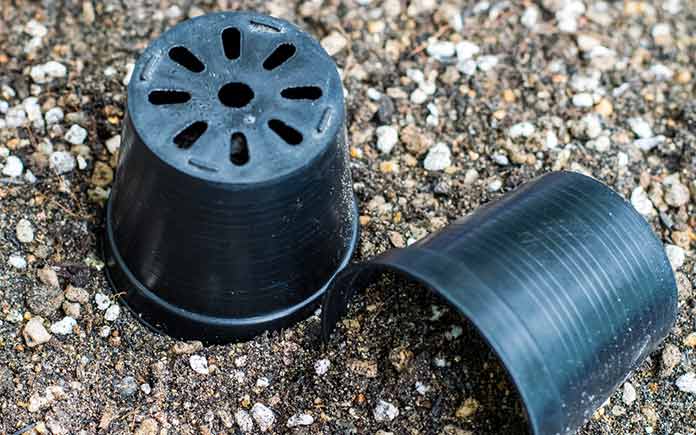
- Flowerpot with drainage holes: There are all kinds of materials available — pick what you like in a size you can handle. (Just remember, it will be heavy when filled with soil and watered).
Water must be able to drain out, or your plants will drown.
If you want to use a decorative planter without drainage holes, plant your flowers in an inexpensive pot that does drain, and set it in the planter on top of a little gravel.
- Bag of potting mix for containers: Potting mix is lightweight and rich in nutrients, and some kinds have fertilizer already mixed in.
Don't use soil from your yard — it's too heavy.
- Piece of screen, shard of pottery, or a coffee filter: This is necessary if the drainage holes are large (over 1/2 inch). Put it over the holes to keep the soil from washing out.
- All-purpose plant food: Optional.
- Flowering Plants: The most important part!
Choosing Flowers
The best flowers for pots can be found in the "annual" or "bedding plants" section of the garden center.
While they only live one summer, they'll bloom the entire season. Other flowering plants (such as perennials, bulbs and shrubs) may bloom beautifully right now, but the flowers will be gone in a few weeks.
Read the labels to be sure your chosen spot offers the right light and temperature conditions for the plants.

Some popular container plants include:
- African daisies
- Angelonia
- Begonias
- Ferns
- Geraniums
- Gerbera daisies
- Herbs
- Impatiens
- Ivy
- Marigolds
- Perennials (ivy, coreopsis, or grasses)
- Petunias
- Portulaca
- Sweet potato vine
- Verbena
- Vinca
- Zinnias

Container Design
Here are some ideas for designing your container:
- Single Accent: Fill a container with the same type of flower for a bright pop of solid color. A pot full of red geraniums is always a cheerful option for a sunny spot, or pink impatiens for a shady porch, or trailing petunias flowing out of a hanging basket.
Another option is to choose just one large plant, such as Boston fern or tropical hibiscus, for a more formal look.
Larger plants often come pre-planted and ready to enjoy.

- Multicolor: You can also put several different varieties and colors of the same flower in the pot. This gives you more color while keeping a fairly uniform shape and texture.
Some plants (such as zinnias, portulaca, impatiens and petunias) even come packaged as a "mix," with a variety of different colors in the same tray.
Be sure you can tell which colors you're getting, so you can distribute them evenly in the container.
- Mixed: If you're feeling more adventurous, try a mixed container. A well-planned mixed container has varieties of height and color.
If you've never put together a mixed planter, you can't go wrong with this basic formula: tall plants for height, bushy ones for width, and trailing plants that spill over the edges.
Most annual flowers can be planted together in the same pot, so be creative! Choose colors and textures you like that complement each other.
Buying Plants
You'll need enough flowers to fill the pots, and to space a couple of inches between them. Plants come in different sizes, and while smaller plants will take longer to fill out, any size is fine.
Gardening Tip
Many garden centers now have pre-planted mixed containers, often with interesting plants that may not be available individually. Use them as design inspiration, or bring one home for instant gratification!
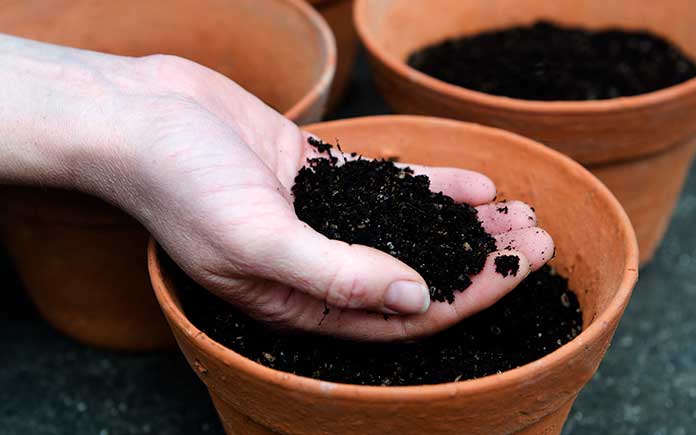
How to Plant Containers
Now it's time for the fun part – planting your flowers!
- Start by covering your drainage holes (if they are large enough that soil would wash out), then fill the pot about two-thirds full with potting mix.
- Set the plants in the container and decide on your arrangement. You can do a round design (tallest plants in the center and shorter or trailing plants around the edges), or a front-facing design (tall plants in back and shorter ones in front).
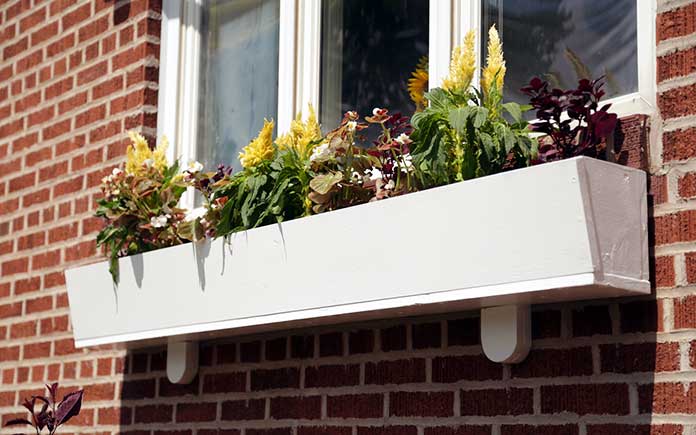
- Gently remove your plants from their store-bought pots. If the plant is stuck, squeeze the pot a little to help push it out — never yank on the stem.
Disturb the roots as little as possible, but if they are a hard-packed ball you can loosen them a little with your fingers.
Then nestle the plants in the soil, keeping an eye on the depth to make sure they will be planted at the same level they were in their original pot.
Gardening Tip
Make the soil surface about 2" below the rim of the pot. Otherwise, water will spill out instead of soaking in.

- Add soil between the plants, firming it gently with your fingers. Don't press hard enough to break the plants.
- Make sure everything is at the same level with no roots showing.
- Move your container to its chosen spot, and water the plant thoroughly until water runs out the bottom.
- Now, step back and admire your handiwork!
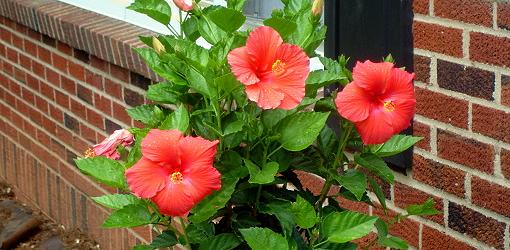
Caring for Containers
- Water your container every two to three days. In the heat of summer, you may need to water it every day.
- If you want to feed your plants, use an all-purpose or bloom-boosting plant food every couple of weeks according to package instructions.
- As you water, remove spent blooms to encourage more blooming — a practice called deadheading. Don't just pull off the dead petals — actually pinch off the little stem beneath the flower.
- If your plants are looking spindly, pinch off the tips of the stems to stimulate them to produce more branches.
Share your container gardening experiences and tips in the comments below!
Further Information
- Garden Myth: Gravel in Pots and Containers
- How to Repot Houseplants
- How to Top-Dress Houseplants
- How to Grow Houseplants in Artificial Light
Flower Pot Drawing Design With Colour
Source: https://todayshomeowner.com/container-gardening-how-to-grow-flowers-in-pots/
0 Response to "Flower Pot Drawing Design With Colour"
Post a Comment